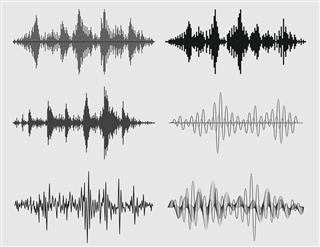
Here is an article on facts about sound waves for kids that is entirely based on exciting facts and concepts about what these waves actually are. So, stick on to it and enjoy your reading till the end.
Well, before we start off with this article and begin with all the technical definitions and mumbo-jumbos of what sound waves are, how are they generated, etc., let’s indulge ourselves in some basics first.
- Have you ever tried to figure out the how when you stand in a particular room and talk your voice gets carried to another person across that room?
- Do you remember one of the simplest experiment we all have done in school of sound waves traveling through a simple handmade string telephone, wherein we take two cups of cardboard and punch a hole at its bottom, attach a 12-15 meter string to it, and communicate with each other?
- Creative at music? Then I bet you must have tried some fancy music on empty bottles in your pastime? Playing bottle music is one of the most common sound wave experiments that children do on their own. All you have to do is explore how the liquid and volume affects the sound waves in different bottles.
If you are a kid who is crazy about science and experiments, then you probably have an idea about all the above-mentioned activities based on sound waves.
Sound Waves
The absolute technical definition is that sound moves through vibrations created in the atmosphere. It is known to be a mechanical vibration traveling through a given matter as a waveform. Thus, it has an alternative definition as a series of compressional and longitudinal waves moving through air or a given source of medium. Sound waves tend to bounce off a given surface or an object and vibrate against that particular object, creating a sound. For instance, if two friends are talking in an enclosed room, their voices bounce off the objects present in that room, like wooden furniture, walls, bed, etc., and thus a sound is created around those objects enhancing a possibility in turn for them to listen to one another. If you consider them travelling in space, its existence is a total disapproval. The reason being is pretty obvious. Space has no atmosphere. Hence, these waves have no particular medium to create a vibration.
This was a short overview on how sound travels through different mediums and materials, like solids, liquids, gases, plasma, etc. Also, how it doesn’t travel though vacuum and empty space mediums, is a notable differentiation to consider. Moving further to see some interesting facts for kids, here I have a bunch of them listed down for you.
Facts
- Sounds exist in a variety of forms.
- They strictly occur based on vibrations that move in a backward and forward direction.
- Most of the sound vibrations are pretty obvious and its source of traveling is determined too.
- Other vibrations are known to be invisible vibrations and are determined by specific scientific experiments.
- Maximum amount of waves that we are able to listen to travel through air and other solid and liquid materials. It’s due to these factors that sound waves are carried from one place to another.
- On a daily basis, the sound that reaches our ears is transmitted by the surrounding air. It is air that stretches and extends the capacity of the sound vibrations to reach our ears. When these vibrations reach our ears, our eardrums vibrate instantly, which in turn sends a message to the brain and stimulates it to react accordingly.
- While traveling through solids and liquids, these waves slightly change and sound strange.
- They cannot travel through a medium of vacuum and empty space, as there is no air nor any object to retaliate and react with.
- Dogs can hear ultrasonic and infrasonic sounds at a much higher frequency when compared to humans.
- These waves help animals and insects to detect their danger. The waves act as a warning signal of their possible attacks.
- The speed of sound is 1,230 kilometers per hour (767 miles per hour).
- When sound travels through water, they move 4 times faster than when they transmit through air.
- The process of these waves in scientific terms is called acoustics.
- The loud noise that you hear is the speed of the sound in air, when you whip crack the tip of a stick at a high speed.
- Because light travels faster than sound, we can see thunder before we hear it.
- If the sound waves are fast, the sound produced is high and if the vibrations are slow, the sound produced is low.
- They are also called pressure waves because they move the particles in the medium they pass through.
- These waves aren’t just detected by human ears, but the whole body can feel the vibrations at a particular frequency.
- These waves bend when they hit any obstacles or corners of an object.
- Have you realized why stringed music instruments that are played with fingers or a bar, when pressed down on the strings, create sound and vibrate different frequencies? Well, when the strings are pressed down with fingers, this changes the length of the string, having them to vibrate at specific frequencies and produce different sounds. A short stroke on the string makes a hard sound, whereas it is the other way round for a long stroke. The thickness of the string is the matter of consideration as well.
Like any other waveform, sound waves too have amplitude, frequency, speed, velocity, and the likewise parameters. Once you understand the whole concept of the pattern in which these waves travel through a medium, I am certain it will trigger your interest into exploration of this subject furthermore.



